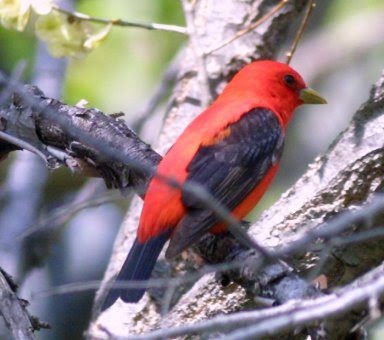
Flowering plants produce fruit, flowers, and most of their new growth only when sunlight, water, and nutrients are abundant, and when temperatures are above freezing. Many cold-blooded ectotherms, which are reliant on external heat sources to maintain their body temperature, are dormant for up to six months of the year.
For roughly 75% of Minnesota’s bird species, migration has evolved to counter this problem of seasonal variability. The superfamily Emberizoidea, which includes the familiar sparrows, cardinals, tanagers, wood-warblers, and blackbirds, includes many migratory species. A 2014 study using an ancestral state reconstruction found that this lineage likely originated in North America during the warmer climate of the Miocene. Migration in this group likely evolved as a response to changing climatic conditions as the Pleistocene glaciation advanced. Despite the high metabolic cost and extreme risks involved in migrating long distances, these species’ ancestors likely fared better if they overwintered in the tropics than if they tried to adjust to the northern hemisphere winter. Insectivorous birds, such as wood-warblers and flycatchers, as well as accipiter hawks, which prey upon songbirds, are among those birds that migrate to the Neotropics. Some birds, such as pine siskins, dark-eyed juncos, and evening grosbeaks, overwinter in Minnesota, as food is more abundant here than in the northerly latitudes where they breed.Other birds are present year-round, such as many woodpeckers, white-breasted nuthatches, chickadees, and owls. These birds can pry dormant insects out from under bark, scavenge squirrel food caches for conifer seeds, and, in the case of owls, subsist on small mammals living under the snow. Migration begins in March and reaches its climax for many songbird species in mid-to-late April. By mid-May, Minnesota’s summer residents have established territories, and the mating season is in full swing. Use the bird checklist on the Arboretum website to check off migrants and summer residents on your own, or join the Cole Student Naturalists for the Spring Bird Count on May 18th!
–Callen Inman ‘19, writing for the Cole Student Naturalists
Add a comment